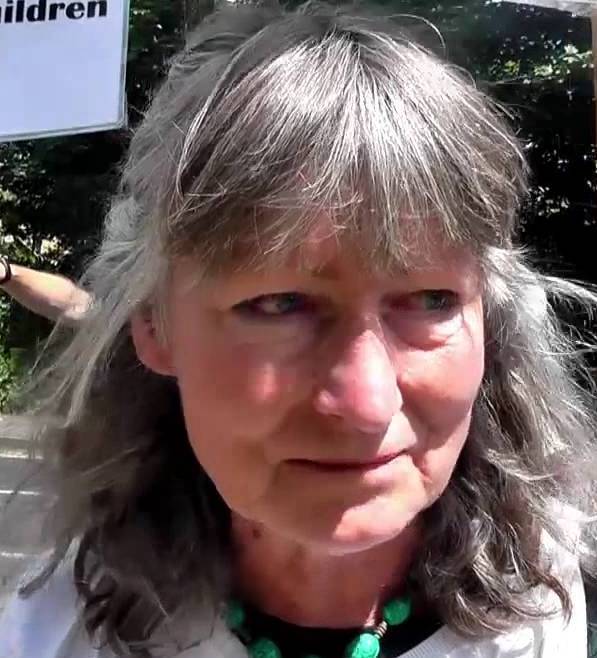Yesterday we talked about Belinda McKenzie’s latest fake charity, the Knight Foundation, which seems to have undergone a purge lately, removing any information about either Belinda or Hoaxtead. You might recall that during the summer, the Ham&High newspaper did an article on the Knight Foundation, and roundly trashed Belinda’s claims that it was in any way a charitable organisation.
Commenter ‘Fairly Sane’ kindly forwarded a couple of sites with information on how to identify and avoid fake charities, which have been springing up across the internet like mushrooms after a rainstorm in recent years. This is good information to have in general, and particularly useful should you ever be approached by a frumpily dressed older lady with long grey hair, a posh accent, and a perpetually extended hand.
 This piece by The Daily Dot, titled ‘5 Foolproof Ways to Spot a Fake Charity on the Internet‘, is written from an American perspective, but offers some good basic info’. It warns potential donors to watch for the following:
This piece by The Daily Dot, titled ‘5 Foolproof Ways to Spot a Fake Charity on the Internet‘, is written from an American perspective, but offers some good basic info’. It warns potential donors to watch for the following:
- Dodgy charities don’t disclose their financials. Real charities are required by law, both here and in the U.S.A., to be completely open about their financial information.
- Fake charities don’t explain exactly what they do. The more vague a charity is about exactly what it will do with the money you donate, the more suspicious you should be. Hazy mission statements, such as ‘we want to help the families of Britain’, or ‘we will help victims of the war in Iran’, tell us very little about what will actually happen. Exactly what form will this ‘help’ take? Exactly who will benefit from it? What outcomes are expected?
- Pretend charities cannot provide evidence of non-profit status. Belinda declaring that she ‘thinks of the Knight Foundation as a charity’ is not evidence. If the foundation isn’t registered with the Charities Commission, it’s not really a charity.
- Real charities are well-regarded by other organisations in the field. “If a charity appears to operate in a vacuum, that’s troubling. Groups interested in the public good typically cooperate with each other, and when they don’t, the charity left out of the cool kids table may actually be uncool, not just a misunderstood misfit.”
- Real charities benefit actual people. Face it: do you know anyone who’s actually been assisted in any way by Belinda McKenzie’s Knight Foundation? Besides Sabine, that is?
Belinda has made a career of playing on well-meaning people’s sympathies: here’s the ‘Donate Now’ section, now expunged from her Knight Foundation website:
 Note the super-vague language: “Your donation will help meet the expenses (what expenses?) of our volunteers dedicated to the service (what kind of service?) of families in difficulties (what difficulties, exactly?) and working (in what way? doing what?) to bring about a world free of child abuse”.
Note the super-vague language: “Your donation will help meet the expenses (what expenses?) of our volunteers dedicated to the service (what kind of service?) of families in difficulties (what difficulties, exactly?) and working (in what way? doing what?) to bring about a world free of child abuse”.
Now that’s what I call a broad mission statement!
You mean to tell us that the Knight Foundation, which you claim has raised a grand total of £800 since its inception in November 2014, has a concrete, workable plan to eradicate all child abuse everywhere in the world? Amazing.
Here’s another site, British this time, that you can use to determine a charity’s bona fides. Of particular note:
Genuine charities are registered with the Charity Commission and print their registration details on all documentation, collection bags, envelopes etc. Check these details exist and also contact the Charity Commission to confirm they are authentic. You can call them on their helpline 0845 300 0218 or by visiting charity-commission.gov.uk, where they have an online charity register.
The bottom line: before you donate your hard-earned cash to a charity, do your homework. That goes double if the charity happens to have Belinda’s fingerprints on it.


The typical fraudster playing on the good will of people, no wonder more people no longer support charities.
LikeLiked by 1 person
You’re right. Belinda’s MO seems to be the same as any other charity fraud artist: find an issue that tugs on people’s heartstrings, slap up a website with a donate button prominently displayed, and then go about stirring up shit until kind-hearted but gullible people start giving. It’s worked for her so far.
LikeLiked by 1 person